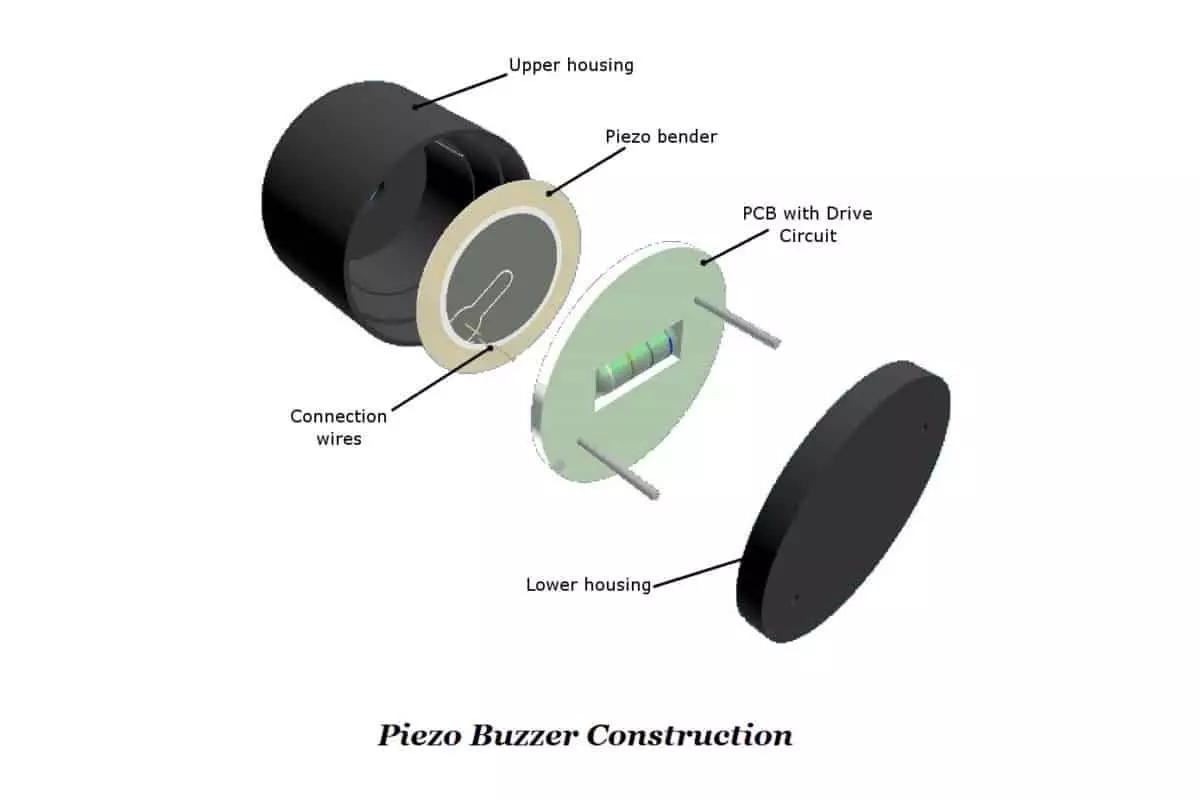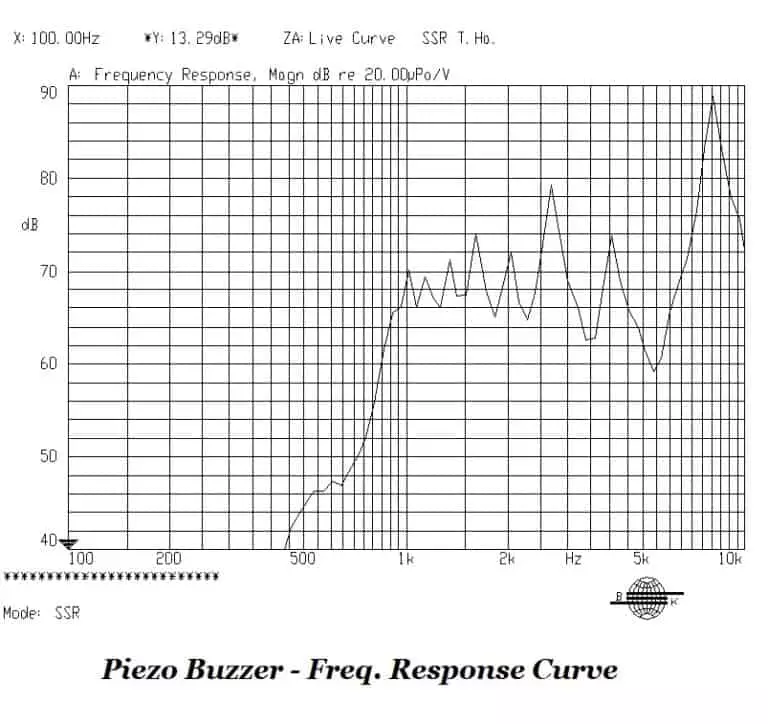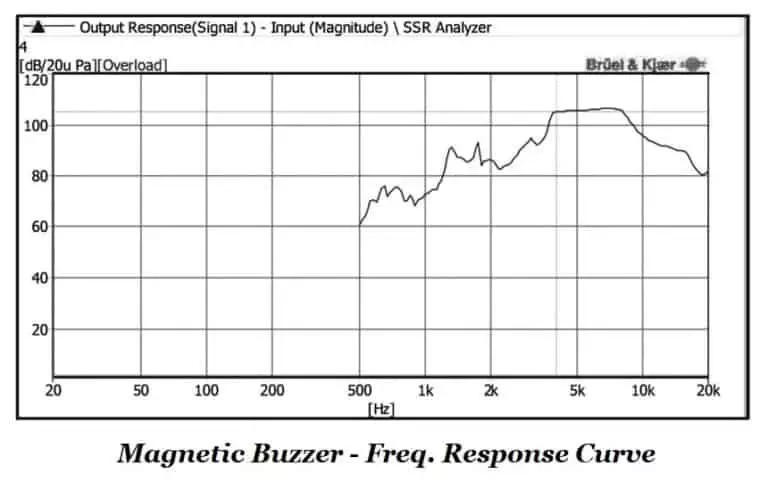Piezo Buzzers
Piezoelectric sound elements have a very unique convention. There is no magnetic field, and no coil used in the construction. Applying an electric field to a piezoelectric material changes its size, i.e. the diaphragm expands/ retracts as charges are introduced/ removed. The base material in the assembly remains fixed. Piezo buzzers have a wide operating voltage ranging from 3 – 250V, and low current draws, typically <10 mA. ISL piezo buzzers feature a unique slim-line profile since they don’t have as many internal components, and are attractive to applications with physical size constraints. Contact our engineering team with your buzzer requirements.

Magnetic Buzzers
Magnetic buzzers are more traditional in their make-up as opposed to piezo buzzers. The current is driven through a voice coil to produce a magnetic field. When a voltage is applied the coil generates a magnetic field and then allows the diaphragm to vibrate and produce sound. This buzzer type has a low operating voltage ranging from 1.5 – 12V, and high current draws, commonly > 20 mA. ISL’s magnetic buzzers are desirable for applications requiring a lower sound pressure level (SPL) and frequency. Our Audio Selection Tool will help you identify your exact component requirements.

Resonant Frequency
Audio components have a specific frequency at which they vibrate; this parameter is called the resonant frequency. This value is dependent on the physical parameters of the buzzer. Driving a buzzer with an input signal which has the same frequency as the buzzer’s resonant frequency, will create the greatest SPL with the least input power. Piezo buzzers have a higher resonant frequency (2-6 kHz) whereas magnetic buzzers have a lower resonant frequency (1-3 kHz). Specification sheets denote resonant frequency as fo.
Frequency and Sound Pressure Level (SPL)
Commonly included on an audio buzzer’s data sheet is a “Frequency vs. SPL” graph. The SPL value is referred to as the sensitivity. Sensitivity is the level of sound pressure in front of the speaker (on axis), at a given amount of power, at a specified distance. A lower sensitivity buzzer will generally require higher powered amplifiers.
SPL gives a general idea of how loud audio can play, and how much power will be required to achieve desired listening levels. Sound pressure is typically measured in Decibels (dB) or Pascal’s (Pa).
The frequency response value which is measured in Hertz (Hz) is used to describe the audible frequency range that a buzzer can reproduce. The theoretical range of human hearing is generally regarded as being from about 20 Hz (the very lowest bass tones) through 20 kHz (the very highest treble notes). It’s common that an amplitude tolerance will be noted along with the frequency response specification and it will often be defined as +/- 3 dB.
Graph Interpretation
When interpreting a buzzers Frequency vs SPL graph, the sound pressure is generally measured at a distance of 10cm away, unless otherwise specified. The SPL value is displayed on the y-axis. This parameter has a direct relationship to the voltage used to drive the buzzer. The higher the voltage is the higher the SPL value is. Frequency response (Hz) is indicated on the x-axis.
The curves show how the audio device responds to each frequency. The SPL is plotted to indicate how the buzzer will handle the frequency input. On a piezo buzzer’s graph it’s notable that the graph has a lot of peaks of amplitude. Electromagnetic components produce a more dynamic range of frequencies with a smoother curve. All buzzers are rated to different frequencies of sound and the sound pressure level is then measured accordingly.
This is an example of a Piezo Buzzer Frequency vs. SPL graph for a 9×9 SMT buzzer rated at 3V:

This is an example of a Magnetic Buzzer Frequency vs SPL graph for a 9×9 SMT buzzer rated at 5V:

Which Buzzer Best Fits Your Application?
In choosing a buzzer it’s important to consider both the electrical and physical parameters required. Aside from frequency and SPL, the operating voltage, current draw, and resonant frequency are all key factors when choosing between a piezo and magnetic buzzer. Need help identifying which type of buzzer will work best for your application, message us for assistance.
The table below highlights the most important specifications in choosing the correct buzzer based on application requirements.
Piezo buzzers have larger frequency and SPL values, high operating voltages, less current draw, and high resonant frequency. Magnetic buzzers have smaller frequency and SPL values, low operating voltage, high current draw, and low resonant frequency. Each application is different, and the desired specifications determine the choice between Magnetic and Piezo. ISL Products will manufacture and supply you with buzzers that will meet your required specifications for all applications.
If you are ready to get started on a project today, submit your requirements and our engineers will respond shortly.


